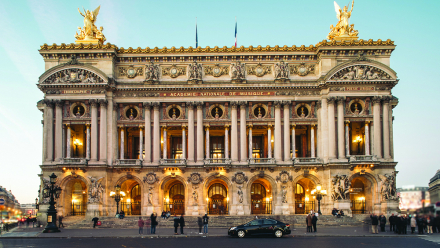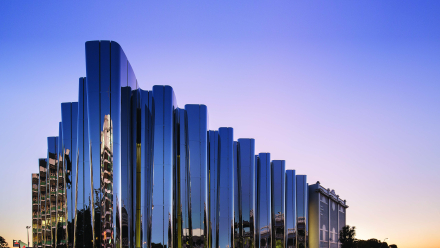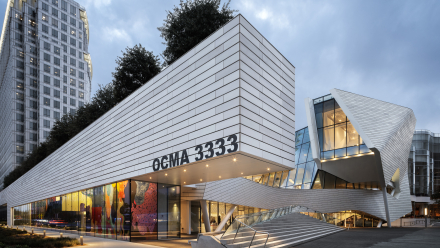US Olympic & Paralympic Museum
Daring freeform museum in Colorado Springs, CO.

Facts
Location
Colorado Springs, CO USA
Nemetschek Group Brands
RISA
Scope
Composite Steel, Steel Framing, Concrete Shear Walls, Cold-Formed Steel
Client
KL&A Engineers and Builders
Owner
US Olympic & Paralympic Museum
Technology used
RISAFloor, RISA-3D
Project Background
The United States Olympic & Paralympic Museum (USOPM) in Colorado Springs is the first permanent institution focused on highlighting both Olympic & Paralympic athletes from the United States. The 60,000 sq-ft structure is located at the base of the Rocky Mountains near the existing United States Olympic & Paralympic Training Center and features 20,000 sq-ft of interactive galleries, a state-of-the-art theater, a terraced outdoor plaza, event space and a cafe. Additionally, the building’s spiraling layout is fundamental in achieving the level of accessibility required to ensure that all visitors share the same common experience.
About the Structure
The primary structure of the museum consists of composite steel floor framing as well as four individual concrete cores that serve as the lateral load resisting system. The roof structure includes a series of bent beam and sloped column trusses that create the overlapping, petal-like volumes that serve as the exterior shell of the building. Additionally, the structure includes a giant, multi-story truss on the north face of the building, that cantilevers out over the main entrance and is supported by a series of sloped columns and cantilevered beams. Finally, the building’s focus on accessibility, in combination with creating a unique, interactive experience for all guests created an array of challenges for the structural engineer. Visitors begin their journey by accessing the top floor via elevators and then utilize ramps to gently wind their way down through the various exhibits. This layout created fifteen separate floor elevations within a height of 75ft and resulted in complex, intermediate framing conditions as well as the absence of continuous floor diaphragms from one side to the other.
"RISA gave us the ability to model and analyze the complex geometrical conditions of the structure exactly how we needed to, while at the same time providing us with reliable results necessary to complete the design." - Nick Trombetta, PHD, PE
Utilizing RISA
To overcome these complex design challenges, KL&A utilized RISAFloor in combination with RISA-3D to create a complete 3D model. One of the most challenging aspects was the need to properly evaluate the structure for lateral loads. This was made more difficult due to the building's intricate layout of individual, intermediate floors. RISA-3D was instrumental in providing flexibility in the application of lateral load as well as helping to ensure that overall stability and correct diaphragm action was achieved at each level. Additionally, nodal input through spreadsheets was essential in generating the nodes connected to various non-parallel beams in order to create the exterior cold-formed framing that served as the support for the 9,000 folded anodized diamond shaped aluminum panels (each unique in shape and size) that make up the exterior façade. Lastly, the ability to collaboratively work between Autodesk Revit, RISAFloor and RISA-3D allowed the engineers to achieve a seamless workflow, one ready to tackle the complexities of this extraordinary project.









